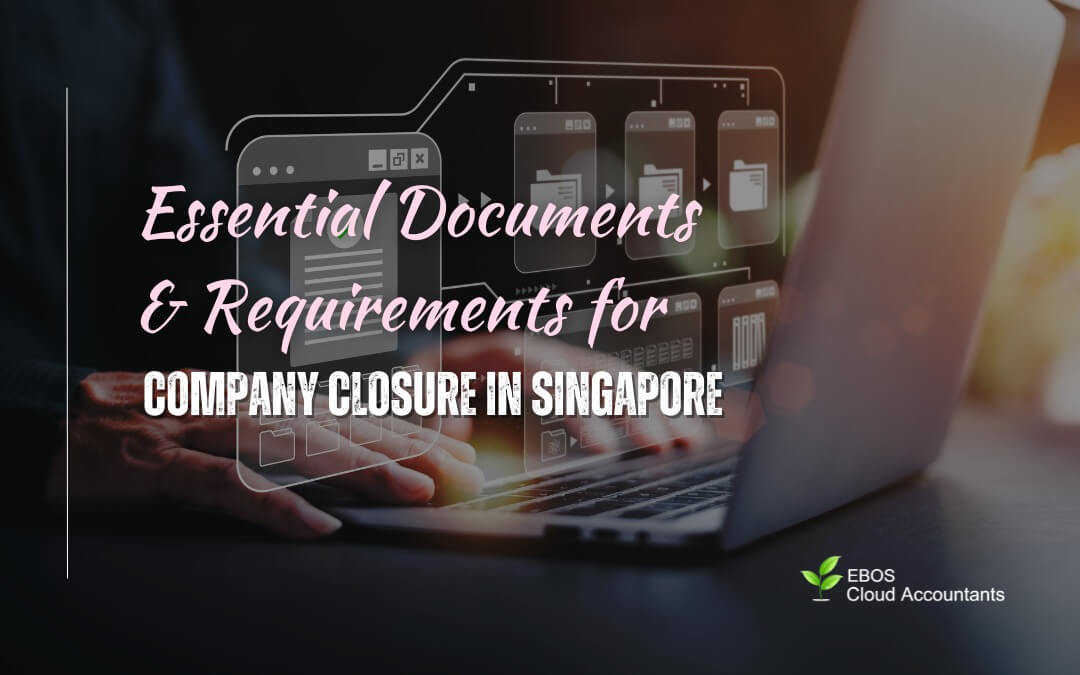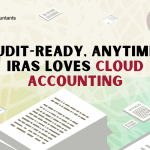Certain companies may inevitably have to close due to inflation, war, and a variety of other circumstances.
In Singapore, you can shut down your business in one of two ways: by striking off employees or by winding up the business. This depends on your company’s tax situation, the condition of its assets, and how much debt it has.
Regardless of how you choose to close a business, you must still follow all the steps to do so legally and successfully to prevent the consequences that could result from failure to present the appropriate documents and requirements.
Closing a Company in Singapore
To close a limited company or a private limited business in Singapore, you must first assess its current situation. The only choice is to wind up your company if it is insolvent. The choice to wind up or strike off your firm is yours if it is debt-free and financially sound.
Although both options may seem identical, the majority of businesses decide against operating in Singapore. While winding up a corporation takes years to handle the accounts, striking it off takes about four months.
Winding Up My Company vs. Striking Off My Company
There are two methods of company closures in Singapore.
Striking off is a better option because it is simpler, quicker, and less expensive. The final option after everything in the company has been “wrapped up” is a strike-off; this means that the company has no assets or liabilities (including any unpaid fines with IRAS), is not the subject of any unresolved ACRA issues and is not involved in any pending insolvency proceedings. The method of striking off is better suited for tiny or inactive businesses.
In other situations, where it would be difficult to completely discharge the firm’s debts, a company could only wind up. Liquidation, another name for winding up a business, is a more involved and formal procedure. A liquidator must be appointed to assist in overseeing the liquidation of the business and its assets. Whether your business is solvent or bankrupt, you can start the procedure. For instance, liquidation is a more likely choice for your business if it is involved in a more complicated circumstance.
Company Wind Up
A business will normally elect to be wound up by its members if its directors feel that the company will be able to pay its obligations within one year of beginning the wind-up procedure. The directors will, however, hire a qualified liquidator to wind up the company’s affairs if they consider it has too many liabilities to continue operating. The procedure is as it is explained below in both situations.
- A Declaration of Solvency is signed in writing by the majority of the board of directors. This is reported to ACRA.
- Members are called to an Extraordinary General Meeting (EGM) within five weeks of the above action to enact resolutions winding up the firm, selecting the liquidators, and authorizing their compensation. A 75% majority is needed to decide whether to dissolve the company.
- The directors appoint a qualified liquidator, who is typically an accountant, between declaring solvency and the EGM.
- The directors must publish the Declaration of Solvency and the appointment of the liquidator in at least four daily publications, one in each of the four official languages (English, Malay, Chinese, and Tamil), within 14 days of the liquidation’s appointment.
- A printed copy of the resolution to dissolve the firm is sent to ACRA no later than one week after it is passed.
- Details of the resolution to dissolve the corporation are published in one or more newspapers within ten days of it being passed.
- All of the company’s records are given to the liquidator, who then assumes active administration of the business from the directors. The liquidator, in particular, resolves creditors’ claims, files any unfiled income tax returns or accounts, and determines how much the company’s owners will get after all outstanding debts are paid.
- The liquidator creates a document detailing how the company’s affairs were wound up and how the company’s assets were distributed when the winding up was complete.
- The liquidator presents this document to a general meeting of the company.
- The liquidator tells ACRA and the Official Receiver (the appropriate regulatory authority) that the meeting took place and includes a copy of the document they created within seven days of the meeting.
- The corporation is formally dissolved three months after being informed of ACRA. Unless a judge rules it invalid within two years, the dissolution is final.
Shares cannot be sold or transferred without the approval of the liquidator during this procedure, and the firm should suspend all operations and ensure that any documents issued on its behalf contain the words “in liquidation.”
In addition to this voluntary process, a corporation may also be compelled to close its doors in one of two ways:
- A court order may require a business to close. The Official Receiver will serve as the liquidator unless a liquidator is appointed by the court to wind up the company’s affairs.
- A firm may be forcibly put under receivership in order to enforce an order for the benefit of the holders of the business’s debentures.
Company Strike Off
The Registrar of Companies has the authority to remove a company from the Register under Section 344 of the Companies Act. The Registrar must have grounds to suspect that the relevant company is no longer in operation to take this action.
Your company must first take care of all of its tax obligations before it can be considered to be no longer active. This means that all IRAS-related inquiries must be addressed, and all assessments must be paid.
The business should terminate its Goods and Services Tax (GST) registration if it had previously applied for it. Singapore sets itself apart from other jurisdictions by offering business owners a variety of online options for promptly and affordably resolving their tax issues. Log into myTaxPortal and complete the necessary application form online to cancel GST. Applications are typically handled the same day they are submitted, although occasionally it may take up to 10 working days.
In addition, businesses should file all of their income tax returns, whether they are a small business filing Form C-S or a bigger one filing Form C. If the firm files Form C, this must include accounts and details of tax computation up to the date of the suspension of business. It is not necessary to also provide accounting and information about how the tax was calculated if the company is a small business that qualifies for Form C-S. But in the case that the IRAS requests them, it is strongly advised to have these documents ready. It is advised that dormant enterprises that have not conducted any trading activity file for a Waiver of Income Tax Returns.
Entrepreneurs should be aware that if they terminate their corporate bank accounts before unresolved tax issues are resolved, they may encounter issues. In particular, businesses whose accounts have been closed down will not receive tax credits from the IRAS. The Insolvency and Public Trustee’s Office (IPTO), which will accept the monies on the shareholders’ behalf, must be approached instead by the shareholders.
Enterprises should use their most recent Notice of Assessment and Statement of Accounts to show the following, as the IRAS won’t issue a specific tax clearance letter to enterprises asking to be closed.
Companies must meet the following requirements in addition to resolving their tax matters:
- The company must not have started doing business after formation or have stopped trading.
- The majority of shareholders must have given their approval in writing to the directors.
neither existing nor future assets.
- There are no unpaid debts owed to clients, lenders, creditors, or any governmental body. Liabilities like contributions to the Central Provident Fund (CPF) are included here.
- There aren’t any pending charges or court cases. This also applies to legal issues outside of Singapore.
If your business has been dormant since incorporation, you are additionally required to demonstrate that:
- No business transactions have taken place since incorporation.
- You have not opened a business bank account or opened one and closed it without engaging in any transactions.
- Your business has not yet held an AGM.
Note that in order to fall into this category, your business cannot be older than 18 months, since after this time the first AGM would have been due.
Conclusion
Singapore is a country that offers business owners a variety of choices for shutting down operations, mostly based on your company’s degree of debt, tax status, and the condition of its assets. Hopefully, your business won’t have to make this choice. But if you decide to close your company, it may be best to engage a corporate services firm to take care of the formalities.
Although the procedures for dissolving a business may appear straightforward, getting assistance from the EBOS Corporate Secretary can save you a lot of time.
Please don’t hesitate to get in touch with us if you need any helpful guidance.







